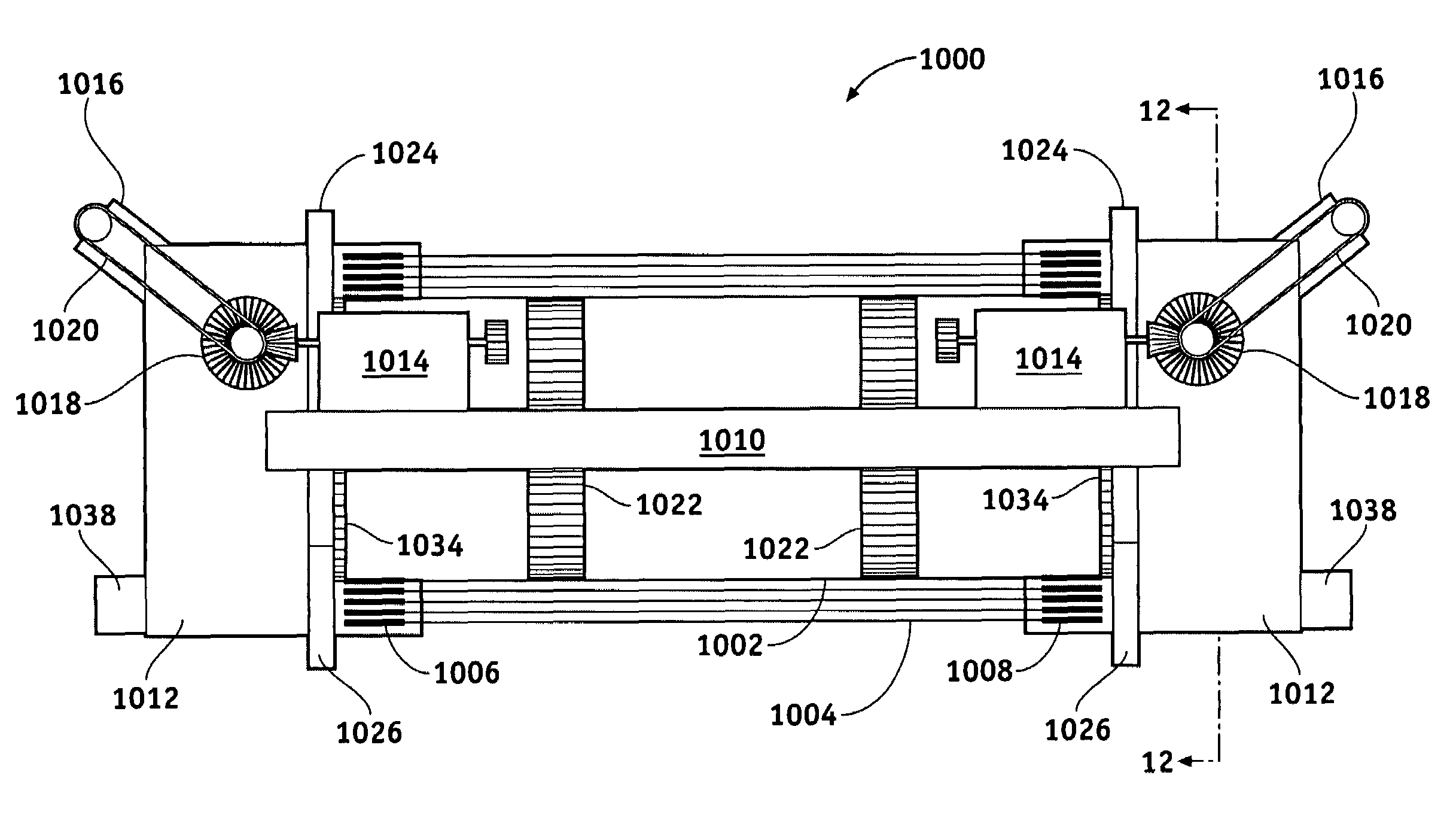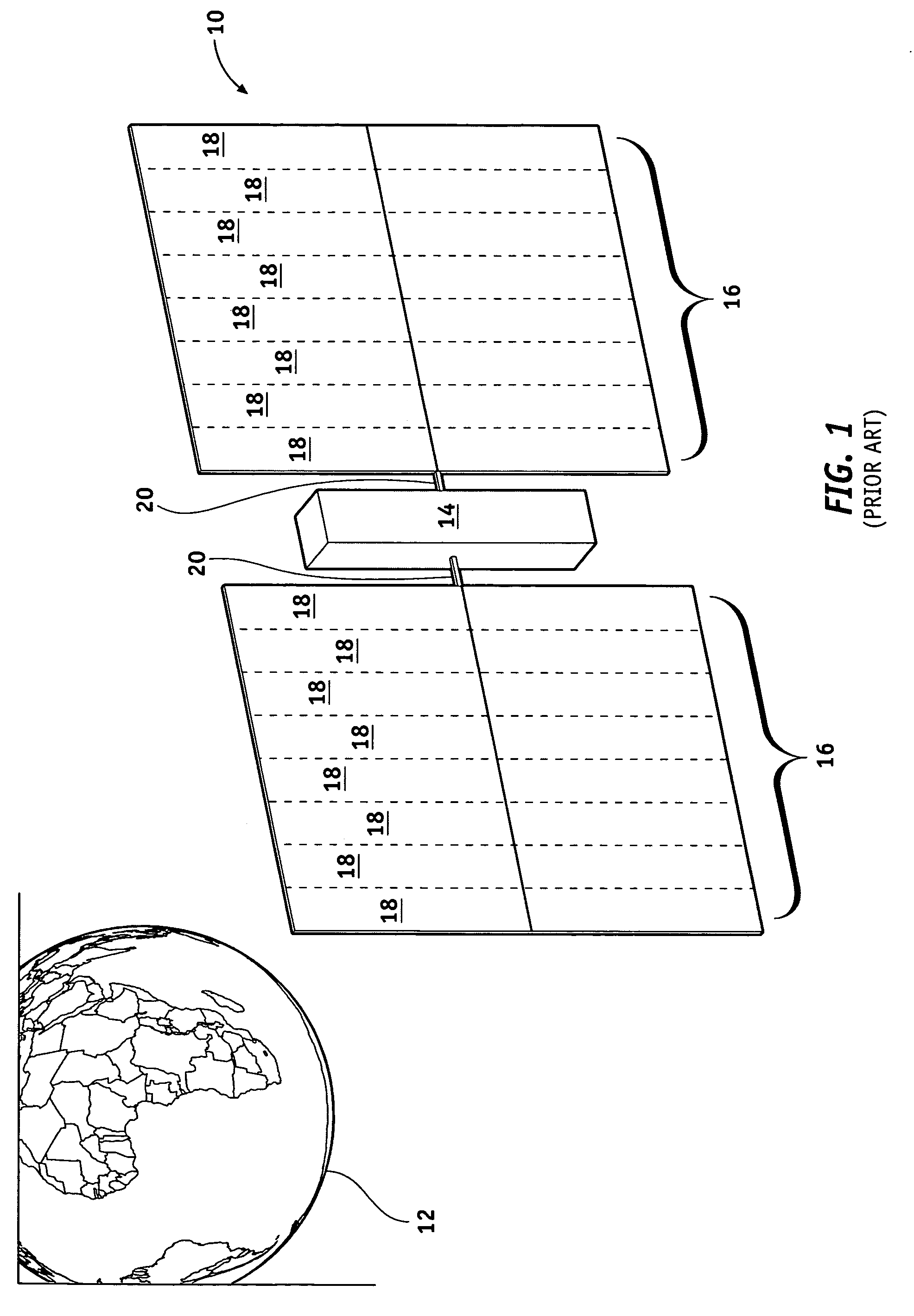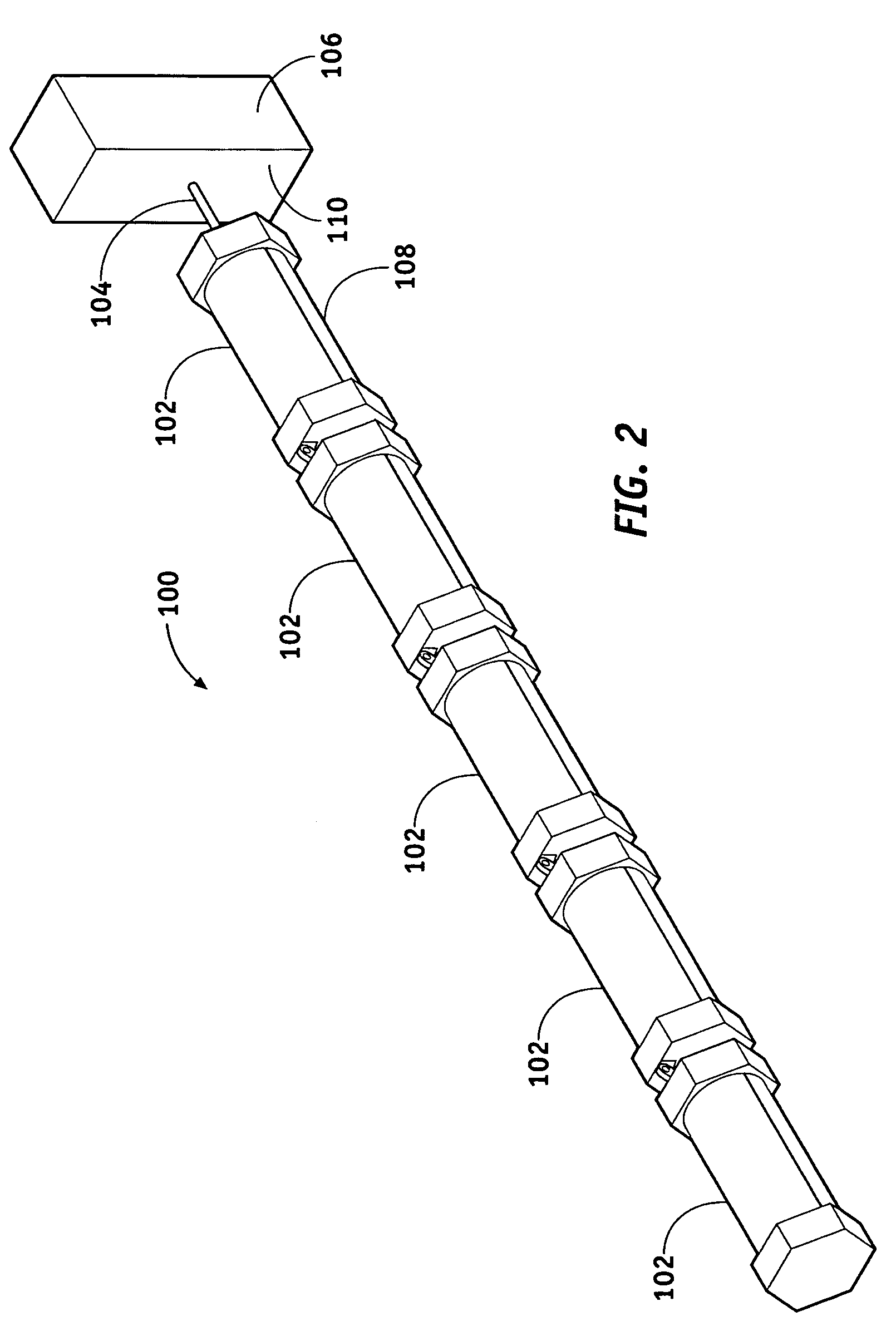Deployable solar array assembly
a solar array and solar cell technology, applied in the field of solar arrays for spacecraft, can solve the problems of reducing the stiffness of the solar cell array, and affecting the general utility of most previously available solar cell arrays
- Summary
- Abstract
- Description
- Claims
- Application Information
AI Technical Summary
Benefits of technology
Problems solved by technology
Method used
Image
Examples
Embodiment Construction
[0024]The following detailed description of the invention is merely exemplary in nature and is not intended to limit the invention or the application and uses of the invention. Furthermore, there is no intention to be bound by any theory presented in the preceding background of the invention or the following detailed description of the invention.
[0025]The various embodiments of the present invention relate to a solar cell array system that is configured to be compact when stored on a spacecraft and deployable at a desired time after launching of the spacecraft. The solar cell array system may utilize at least one solar cell panel assembly comprising at least one flexible solar cell panel. Upon deployment, the solar cell array system orients the solar cell panel assemblies, if more than one, so that the flexible solar cell panels may be released from the solar cell panel assemblies, forming a solar array. In one embodiment of the invention, upon deployment, the solar cell panel assem...
PUM
 Login to View More
Login to View More Abstract
Description
Claims
Application Information
 Login to View More
Login to View More - R&D
- Intellectual Property
- Life Sciences
- Materials
- Tech Scout
- Unparalleled Data Quality
- Higher Quality Content
- 60% Fewer Hallucinations
Browse by: Latest US Patents, China's latest patents, Technical Efficacy Thesaurus, Application Domain, Technology Topic, Popular Technical Reports.
© 2025 PatSnap. All rights reserved.Legal|Privacy policy|Modern Slavery Act Transparency Statement|Sitemap|About US| Contact US: help@patsnap.com



